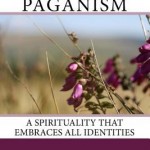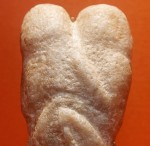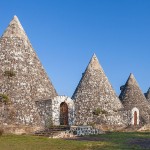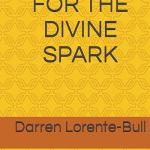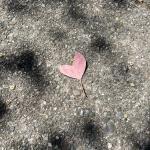This week, we are pleased to once again host an original research article by Christopher Scott Thompson, exploring an alternative origin for the “maiden, mother, crone” Goddess theology that has been so influential in contemporary Paganism. Thanks, Christopher, for the intriguing argument!
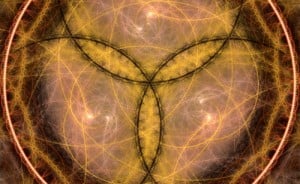
Three Brigits: Just Not the Three You’re Thinking Of
Any Brigidine pagan, on hearing the phrase “Three Brigits” would think immediately of the famous passage from Cormac’s Glossary:
Brigit, i.e., a poetess, daughter of the Dagda. This is Brigit the female sage, or woman of wisdom, i.e., Brigit the goddess whom poets adored, because very great and very famous was her protecting care. It is therefore they call her goddess of poets, by this name. Whose sisters were Brigit the female physician (woman of leech craft), Brigit the female smith (woman of smith work), from whose names with all Irishmen a goddess was called Brigit.[1]
Some would also be aware that there were other Brigits, women mentioned in passing in the medieval Irish lore. There’s been some debate about whether these women had anything to do with the goddess Brigit or not, and in any case they are very obscure figures. Because Brig means power, a woman with the prefix Brig in her name may be the power of a particular thing; for example, Brig Brethach could be read as “Brigit of the Judgments” or “Power of Judgment.”
The known Brig-figures include Brig Ambue (“Brigit of the Cowless”), Brig Euit (“Brigit of Piety”), Brig Briugu (“Brigit of Hospitality”), Brig Brethach (“Brigit of the Judgments”) and Great Brid of the Horses.[2]
The reference to Brig Euit makes it clear that she was actually St. Brigid. Brig Brethach is used several times as a nickname for Brig Ambue and at least once as another name for Brig Briugu, but there was also another Brig Brethach, the wife of Sencha MacAilella. Great Brid of the Horses is arguably a duplicate of this Brig Brethach. In a later era, the legendary (if not infamous) poet Senchan Torpeist had a wife named Brigit, who makes a brief appearance in “The Proceedings of the Great Bardic Assembly” and stars in its derivative tale “Great Brid of the Horses.”
Senchan Torpeist has deep links to the Ulster Cycle (he is the bard who recovered the Tain, among other things) and the name Senchan is obviously close to Sencha. This implies that Sechan and his wife Brigit are later reflexes of Sencha MacAilella and his wife Brig Brethach.
If we set aside Brig Euit and Great Brid of the Horses for now, we have three Brig figures: Brig Briugu, Brig Brethach and Brig Ambue, all of whom were sometimes referred to as Brig Brethach. However, these are not three random Irish women mentioned at disconnected points in the medieval lore. Instead, they are three generations of the same family!
According to a footnote by Eugene O’Curry:
Several women of the name of Brig are mentioned in. the ancient laws as female judges; some of them appear to have been connected with each other. The mother of Senchan, chief judge and poet of Ulster in the time of Conchobar Mac Nessa, was called Brig ban Brughad or Brig the female Brugad; his wife was called Brig Brethach or Brig of the judgments; and his daughter, the Brig A mbui alluded to in the text, was also it would appear called Brig “of the Judgments”, and was wife of Celtchoir Mac Uthichair, a renowned personage of the Tain Bo Chuailgne, and other heroic tales of that period. She is mentioned as one of the nine, or rather ten, women who accompanied Queen Mugan, wife of Conchobor Mac Nessa, at the Fled Bricrind or Bricriu’s Feast.[3]
Brig Ambue was the wife of Celtchar MacUthechair of the Ulster Cycle, but she was sometimes referred to as Brig Brethach or “Brigit of the Judgments,” supposedly because she gave a famous legal judgment in correction of her father Sencha mac Ailella, poet and judge to Conchobar MacNessa. The name Sencha is very similar to senchas, a word that means lore or tradition. This is especially significant because the references to Brig Ambue come from the Senchas Mor or “Great Tradition,” a medieval collection of Brehon law.
Brig Brethach was her mother, the wife of the same famous judge and poet.
Sencha’s mother was Brig Briugu or “Brigit of Hospitality,” but the glosses to a story called Din Techtugud identify this Brig as the Brig Brethach who corrected Sencha’s false judgment.[4]
Three Brigits: the mother, wife and daughter of a famous poet whose name actually means Lore or Tradition, and who are known mostly from a book called the Great Tradition.
We are not dealing with scattered references to women named Brigit, but with a second trinity of Three Brigits. Unlike the more well-known trinity of three sisters from the Mythological Cycle, these three are from the Ulster Cycle. As such, they are described as being human women- but their connection to the goddess is now unmistakable, and they are probably best described as avatars.
Brig Briugu
O’Curry calls the grandmother Brig ban Brughad. According to the Electronic Dictionary of the Irish Language, briugu means:
Landowner, hospitaller, in later sources also farmer, yeoman. In legal texts the b. is a rich landowner with a public function of dispensing unlimited hospitality to all persons in his hostel, which must be in an accessible position. For this he is given the same honour-price as the king of a túath… recognized as common intervener in disputes.[5]
According to eDIL, the word briugas means “function of a briugu; hospitality, riches, abundance:; plenty,” and briugaid is a form of this word.[6] All the other meanings of brugad are not relevant, so Brig ban Brughad must mean “Brigit the Female Hosteler,” a variation on the name Brig Briugu.
A hosteler in ancient Ireland was a wealthy peasant or successful farmer who could attain a semi-noble status by offering free hospitality to travelers. Hostels figure prominently in Irish lore, and especially in the lore of this particular family. A hostel was essentially an inn where you didn’t have to pay for food or lodging. So, Brig Briugu is connected with agriculture, hospitality and the Celtic ideal of open-handed generosity without thought of reward. It seems likely that anecdotes about St. Brigid’s generosity with food and drink derive from the lore about Brig Briugu.
Brig Brethach
Brig Brethach or “Brigit of the Judgments” is the wife of Sencha the judge and poet. The fili in ancient times combined both roles, so Brig Brethach was presumably a fili as well. Sencha was one of the men who volunteered to serve as foster-fathers for the hero Cuchulain. Sencha never became a full-time foster-father to Cuchulain, but did teach him the skill of eloquence — presumably with the assistance of his wife Brig Brethach. In Gaelic folklore, St. Bride is often referred to as Muime or “foster-mother,” referring to the legend that she was the foster-mother of Jesus Christ. Considering this fact, it seems significant that a pre-Christian Brigit was a foster-mother of sorts to Cuchulain, the son of the god Lugh.
Sencha’s role in the Ulster Cycle is that of peacemaker. Considering that this was a typical role of the briugu, he may have inherited this position from his mother. When the stubborn, vainglorious and recklessly violent warriors are about to lose their tempers, Sencha shakes his “branch of peace” and persuades them to either submit the matter to arbitration, talk it out instead of fighting or at least agree to a cooling-off period. He is described as having a voice as sweet as music, which must have helped him in his profession[7]. Although Sencha is described as reciting a rosc or battle-incitement poem by royal request on one occasion, he is essentially a professional deescalator, like the “violence interruptors” who try to prevent gang violence in modern Chicago.
Confusingly enough, Bretha for Conslechtaib states that the wife of Sencha was named Brig Ambue, so there is no clear distinction between the three members of this trinity. They are all, apparently, Brig Brethach.
Brig Ambue
Brig Ambue or “Brigit of the Cowless” is a complex figure. On the one hand, she was a famous female jurist (“the female expert of the men of Ireland in wisdom and prudence”) known for her role in defending the rights of women. On the other hand, she was a femme fatale, whose manipulations led to the deaths of her own husband Celtchar Mac Uthechair and the hosteler Blai Briugu.
Brig Ambue’s name implies a connection to the Ambue, a class of people with no property in old Irish society. As the granddaughter of a hosteler and the wife of a famous Ulster warrior she would have been quite wealthy, so she most likely earned this name by rendering legal judgments on behalf of the disenfranchized and powerless. P. Sufenus Virius Lupus, in the article The Hidden Imbolc, has suggested that Brig Ambue was connected to the purification and reintegration of “cowless” or outlaw Fian warriors around the time of Imbolc.[8]
Brig Ambue plays a role in two of the Ulster Cycle tales, although she is referred to as Brig Brethach in one and not mentioned by name in the other. We know the Brig Brethach in these stories is really Brig Ambue thanks to O’Curry’s footnote- Brig Ambue was the wife of Celtchar Mac Uthechair, not of Sencha Mac Ailella who was her father.
Her father Sencha is the wise counselor and peacemaker at Bricriu’s Feast who oversees the “War of Words of the Women of Ulster” after Bricriu incites the wives of the Ulster heroes against each other. As Brig Ambue’s husband Celtchar is mentioned as having been in attendance, she must have been one of the participants in the War of Words, although her speech is not given.
Sencha shows himself to be a misogynist in this tale by blaming all the trouble — and all warfare in general — on the women:
“It is through the fault of women the shields of men are broken, heroes go out to fight and struggle with one another in their anger… It is the folly of women brings men to do these things…”[9]
He received his comeuppance for this sort of attitude from his own daughter Brig, who earned her nickname Brig Brethach by correcting his judgment on a legal matter affecting the rights of women. Sencha had ruled unfairly, causing blotches to magically appear on his face. When Brig gave the correct judgment, his blotches disappeared.
Despite this obvious reference to Brig Ambue as a figure of justice, The Tragic Death of Celtchar mac Uthechair portrays her as either a ruthless schemer or a destructive embodiment of destiny, depending on how you interpet her role.
For whatever reason, Brig Ambue seems to have determined on the death of Blai Briugu, because she deliberately put him in one of the geasa traps beloved by old Irish storytellers. In the story, she travels alone to Blai’s hostel despite knowing that he has a geis or taboo requiring him to sleep with any unaccompanied woman under his roof. When he complains that she’s going to get him killed, she replies “It is a wretched man that violates his own geasa.” Blai has sex with her, and when her husband Celtchar hears about it he hunts Blai down.
Blai attempts to escape his fate by staying as near the king and Cuchulain as possible, but Celtchar comes up and stabs him dead with a spear while he’s watching his two protectors play a board game. The blood splatters on the board, but it’s a little bit closer to the king’s side so the duty of revenge for Blai’s death falls to him.
Celtchar flees south to Munster, but is lured back with guarantees of safety. His fine or “blood-price” for Blai’s murder is to protect Ulster from its three worst threats. He successfully disposes of a warrior with sword-proof skin by promising his daughter Niam to the man and then getting her to find out his weak point. He kills a giant, maneating mouse by ripping its heart out. However, the third monster Conchobar asks him to kill is his own dog, which is running wild and killing people. When Celtchar does so, a drop of the dog’s blood rolls down his spear and burns right through him, killing him instantly.[10]
The presence of a wild dog in this story may be significant, as outlaw warriors of the Ambue class referred to themselves as being wolves or werewolves, and there was no distinction in the Irish language between a wolf and a dog. According to Katherine Simms, the Irish law tracts refer to Brig Ambue as the first person ever to train a lapdog[11].
It could be that the dog in this story is no dog at all, but an Ambue warrior once loyal to Celtchar but now gone rogue- or simply carrying out Brig Ambue’s desire to see both Blai and her husband dead. The story gives no explanation for why she sets this destructive train of events in motion, but three possibilities come to mind.
One is that she could have been seeking retribution for some wrongdoing committed by both Blai and her husband.
Two is that the storytellers could have cast her in the role of the otherworld woman who forces a doomed man to violate his geasa for no other reason than the fact that he is doomed.
Three is that her role in this myth is actually a metaphor for the nature of justice. Blai knows what he is supposed to do but he’s scared to do it; she reminds him of his obligations and he fulfills them – even at the cost of his own life.
Brig Ambue appears in another anecdote under the odd nickname Cúicthi or “Five,” again to correct her father’s judgment. In this case, a mysterious woman interrupts a duel between Conall Cernach and Láegaire Buadach to ask them to delay the fight and seek arbitration. They ask Sencha how long they should wait for, but he doesn’t know so they ask the woman. She tells them to wait five days, and they ask her name. She tells them her name is Cúicthi or “Five,” but a gloss on the manuscript says the woman was really Sencha’s daughter “Brighi”- in other words, Brig Ambue. Her father didn’t recognize her because of a magic veil. Strangely enough, it also says she was married to Cuchulain — perhaps after Celtchar’s death?[12]
In any case, this anecdote is used as precedent for setting the standard waiting period before distraint at five days. For instance, if a man lost a judgment and had to pay a fine of ten cows, the plaintiff would have to give him notice and then wait the required number of days before staging a cattle raid to recover the fine. The waiting period created space and time for the defendant to pay the fine, reducing the likelihood of violence. Distraint also applied to cases involving women, but the rules were different. This was the primary theme of the “judgments of Brig.”
The Judgments of Brig
Modern pagans often interpret Brigit as a goddess of social justice or even of activism, partly because of several stories that cast St. Brigid in this role and partly because of fragmentary references to the judgments of Brig Ambue or Brig Brethach.
According to Katharine Simms, references in the legal tracts to a work called Bretha Brígi Ambue or “The Judgments of Brig Ambue” do not mean that such a document ever actually existed. Instead, the Bretha Brígi Ambue was a mythical book, invoked when it was deemed necessary to make changes to established law. When the judges of medieval Ireland came to the conclusion that a particular law was unfair, they would make up an anecdote in which Brig Ambue or Brig Brethach gave a judgment on the matter.[13]
In culturally conservative traditional societies, change is managed by pretending it isn’t change in the first place. One way to do this is to invoke a fictional ancient precedent, so that the new law isn’t described as being new but as an older and more authentic tradition more in line with what the Irish called firinne or universal Truth.
The blemishes on Sencha’s face were caused by his deviation from firinne, and they went away automatically when firinne was restored. If a medieval Irish judge had been around when Americans were debating about giving women the vote in 1920, he would have made up a story in which the first justice of the Supreme Court ruled against women’s suffrage and immediately got blisters on his face until his daughter Brigit corrected him. Then our time-traveling Irish judge could feel totally comfortable about his support for the 19th Amendment, because it would no longer be a radical new idea but an older and more traditional tradition.
So, the “Judgments of Brig” do not actually represent pre-Christian myths, but changes to early medieval law justified by reference to a shadowy pre-Christian figure called “Brigit of the Judgments.” The specific cases described as “Judgments of Brig” all have this characteristic.
Brig Ambue’s most famous judgment involved cases of distraint over inherited property. Under ancient Irish law, a man who inherited property but didn’t have physical posession of it was expected to follow a detailed procedure. First he had to bring two yoked horses and one witness over the boundary line to give legal notice of his claim on the land. If the current owner refused to acknowledge his claim he could return ten days later with four horses and let them graze for a little while. If he returned ten days later with eight horses he could move into the house and make a fire, at which point the land was his regardless of what the original owner said[14].
Acording to the story, a woman named Ciannachta asked Sencha whether she could use this process to press her claim to a piece of land. Sencha told her she couldn’t do so; it was only for men. While this was obviously a sexist law, the logic behind it was based on the clan mentality of ancient Ireland rather than on hatred for women per se. If a man inherited property it would remain within his fine or kinship group; if a woman inherited property the fine could lose it if she got married. In addition, property owners were expected to show up for military service at the king’s request, and while there may have been some female warriors most women were not trained as fighters.
Regardless of the logic behind Sencha’s sexist judgment, blisters appeared on his face overnight- it was a violation of firinne. He tried to get rid of the blisters by telling Ciannachta she could use the same process, but the blisters stayed.[15] This second attempt at a judgment was something of a cyncial ploy on Sencha’s part, as a man was a lot more likely to have access to eight horses than a woman was. If this judgment had been upheld, women would have had the right to inherit land in name only, because it would have been much harder for them to press a claim.
This is when Brig Ambue stepped in, ruling that Ciannachta could use a different procedure. All she had to do was bring two sheep and a witness, bring the sheep back to graze after eight days and move into the house after another eight days. As soon as she baked bread in her new house it was legally hers[16].
Although the legal logic involved is obviously specific to ancient Ireland, this law would clearly be considered “progressive” in modern terms, because it modifies an existing law to make it more just to women.
This anecdote was then used as precedent for similar changes in Irish law on distraint. Men were required to follow a variety of different procedures with different waiting periods depending on the urgency of the situation and the rank and gender of the defendant, but the law was reformed to allow women to give only two days notice regardless of the defendant.
Another “Judgment of Brig” gave women the right to pass down property to their daughters in some circumstances. This had previously been illegal, because it would cause the father’s kinship group to lose some of its land. However, there was apparently a custom in which a new husband pleased with how the wedding night had turned out could give his bride a piece of property as a gift. This was called “land of hand and thigh,” and Brig is supposed to have ruled that land of hand and thigh could be passed down to daughters. Leaving aside the several layers of archaic thought in this entire concept, this is once again a progressive law. Women previously could only hold life-interest in any land belonging to the clan and couldn’t own it outright, but after the law was changed it was possible for women to own some of this land outright.[17]
These examples suggest that the modern understanding of Brigit as a goddess of social justice and progressive reform is fully supported by the lore, since “Brigit of the Judgments” was invoked to validate progressive changes to medieval Irish law.
Mother, Wife and Daughter
Despite Sencha’s sexist tendencies, the man clearly had his good points, foremost of which was his role as a peacemaker and “violence interrupter.” Sencha’s use of verbal eloquence to deescalate and defuse potentially violent situations is in line with traditions that the goddess Brigit and her animals keened and mourned for any violent conflict.
If we think of Sencha not as a human being but as a personification of Tradition- which is what his name implies- then we get an interesting pattern. Brigit of Hospitality, a farmer and commoner as all hostelers were, is the mother of Tradition. Brigit of the Judgments is the wife of Tradition. Brigit of the Cowless, who challenges her father’s unfair judgments, is the daughter of Tradition.
This can be read as a kind of commentary: “The mother of Tradition is the wisdom of the common people, the wife of Tradition is good judgment and learning, and the daughter of Tradition is the willingness to challenge Tradition in the name of justice.”
All three of them are Brigit.
Nora Chesson’s Three Brigits
The Three Brigits of the Ulster Cycle were virtually forgotten for many centuries before early Celtic scholars such as Eugene O’Curry and Henry O’Neill recorded their existence in passing. When O’Curry wrote On the Manners and Customs of the Ancient Irish he didn’t draw any particular attention to the Three Brigits- his reference to them is only a footnote in a very large book. O’Neill’s reference is also quite short:
The right of women to inherit property was admitted at a very early period, certainly long before their exemption from war, if we can be sure that it really was St. Adamnan who secured their freedom from obligation to serve, and not some early pagan legislator of whose act this is merely a Christian echo. Tradition states that it was a learned woman who secured for women in Ireland a part of any succession, namely, a third part of the landed estate if there were no sons. Later the whole property went to the daughters in default of male heirs.
The one who reflected this change for women was Brig or Brigit Ambui, the daughter of Senchan, chief poet and judge to King Conchobar mac Nessa of Ulster, and the third of her name. For her mother was Brig Brethach, or Brigit of the Judgments, and her grandmother Brig ban Brughad, or Brigit the Farmerwoman. The name recurring so often makes one suspect that we have to do with matters so far back that the name of Brig the goddess of learning has been varied to suit poetic treatment.[18]
However, these short references must have made a big impression on at least one person: the English poet, writer and mystic Nora Jane Hopper Chesson (1871-1906), whose Ballads in Prose was published in 1894.
Chesson was a dreamer of the Celtic Twilight type, and although she had an Anglo-Irish father and a Welsh mother she had no personal connection to Celtic folk traditions and never visited Ireland in her life. Despite this fact, she was surprisingly influential in the Irish literary renaissance, influencing Yeats among others. According to the Oxford Dictionary of National Biography, Yeats was irritated by her mildly plagiaristic habits, but inspired enough by her version of Celtic mysticism that he considered founding his own occult order along Celtic lines.
Chesson created at least two new myths about Brigit, along with at least one poem. All three of them are overtly pagan, so Chesson could be considered the first Brigidine pagan of modern times.
Chesson herself claimed that all of her writing was nothing but “moonshine,” and told others she had based none of it on genuine Celtic lore[19]. However, this appears to have been false modesty on her part, as the following piece could only have been written by someone familiar with one of these passing references to the Three Brigits, and only someone very well-read in Celtic lore would have even stumbled on them:
THE THREE BRIGITS
From “Ballads in Prose” by Nora Chesson, 1894
They sat in the uncertain sunshine of a wintry day, the three Brigits: Brigit, the Farmer, old and brown and withered — her daughter, Brigit of the Judgments, a tall and comely woman ripened and sweetened by fifty autumns — and the grand-daughter Brigit, straight and slim as a rush, with all the beauty of her face folded and sleeping still.
Now the eldest Brigit sat nodding in her carved chair, with the sunlight warm on her blind eyes, but the house-mistress, Brigit of the Judgments, sat spinning busily, and her daughter stood in the open air under the blessed thorn, watching her busy mother, with a smile in her dreamy eyes. And as she dreamed, there came a step on the ringing road, and a shadow fell across the girl’s feet – the shadow of a tall woman with a face kind and sad and beautiful, who carried a sleeping boy in her arms.
“The gods save all here!” she said, softly, “and bless the work!”
“Come in, and welcome,” said Brigit of the Judgments, heartily. Then she raised her eyes to the stranger’s face, and her own grew white and strange, as does that face which looks on something that is not of this world.
“Who are you ?” she cried.
“My name,” said the woman, softly, “is Kathaleen Ny-Houlahan: and his — ” looking down with a smile in her grey eyes at the lad in her arms, “Oh, one may call him Aongus (Love), or Eireag (Beauty), or Aighneann (Lover), or Gort (Sourness); he has nigh as many names as he has faces. What will you call him, Brigit of the Judgments?”
Brigit of the Judgments turned a hungry face to meet her guest’s clear eyes.
“He is the child I lost long ago,” she muttered, “he is my little Culainn, and he has his father’s eyes — there never was a comelier lad than my Eoghan: and because his dead beauty kept the door of my heart I never kissed the lips of thy father, Brigit, good mate though he made me. Let me have the child, daughter of the stranger: he is mine.”
Kathaleen Ny-Houlahan smiled. “Told I not that he was Moran of the many names? Now,” turning to the youngest Brigit, ” tell me what he seemeth to thee, O little maiden of the yellow cool?” And the third Brigit drew back with a face that blossomed red as the leaves at a rose’s heart.
“I see –” she said, and put back the yellow hair that the wind blew in her face, “I see — Oh mother I see what you saw in Eoghan’s face – and now shall I say all that I see? I see short joy and long sorrow, shame and severance and suffering, patience and pride — and do I not also see that I would thole the sorrow for the sake of the short joy? Oh mother, hold me fast lest I gather the shame, too.”
“I said,” quoth Kathaleen Ny-Houlahan, “that he was Moran of the many names. Aongus or Aighneann wouldst thou call him, O little one? and to thy mother is he her lost child and her lost husband: and what to me? Ah, when last I looked him in the face, I called him Conasg (War): for I saw a light in his eyes that was like the light of swords. And now, O old mother, rise up and say what thou seest in his face.”
“I am blind, Lady,” muttered Brigit the Farmer. “I am blind and I cannot see.”
“Rise up,” said Kathaleen Ny-Houlahan, as if she had not heard, “and look on him, and say what thou seest in his face.”
So the old woman rose and came to her side, without help of either staff or guiding hand, and she fixed her blind eyes on the face asleep on the breast of Kathaleen Ny-Houlahan. Then to the watching mother and daughter it seemed that the blind eyes gathered colour and depth as they gazed: and last, the light that had left them. And then with a cry the grandmother fell back into Brigit of the Judgments’ arms, and women came from the house and bore her in, and laid her softly on her bed, seeing that she was stricken with death. And Brigit of the Judgments wept over the happy face of her gray mother, and never heeded that she hindered her soul from passing: and, outside in the winter sunshine, Kathaleen Ny-Houlahan waited with her back against the holy white-thorn. And beside her the youngest Brigit stood, dreaming, looking past bawn and barn away to the silvery ribbon of the Boyne running swiftly away to wooded Brugh where Aongus Oge was still thought to have his golden house. And Kathaleen Ny-Houlahan turned her eyes on the girl’s face, and, holding them there, again she turned back the mantle from the face of him she bore on her bosom. And softly she said, ” Look!” and Brigit obeyed her. And as she looked, there came a smile over the sleeping face, and the smile smote to the girl’s heart with sorrow as sharp as a spear: but Kathaleen’s look kept back the tears from her eyes and the cry from her lips: and for a little while the twain kept silence. And then Kathaleen covered the sleeping face, and with that Brigit’s tongue was loosed, and she cried out, sobbing, ” Oh! fair he is and dear he is, Dark Woman, and a while since would I have died to walk the world with him: and now it seems to be better to live and die without him – and that your frowns were dearer than his praising, Beauty of the World!”
“I am not she!” said Kathaleen NyHoulahan. “She passes away, and I can never die-for even when my own children stone me, I must rise again, and go on my road. And – oh! Flesh of my flesh, but you have stoned me often !” she cried. “And oh! but how good it were to feel the shamrocks growing over me!”
“But then the world would end, Pulse of our hearts,” said Brigit. “And must you go on your way again, you and Moran of the many names? Will you not stay a little – and we would serve you well?”
“It is for me to serve my people,” said Kathaleen. “But I must not stay: for I was born when the wandering wind met the wandering fire, and the twain are in my blood.”
“Then take me with you,” Brigit cried, “for I shall never be wife or mother, and what use is there for me in my mother’s house? Take me with you, Heart of hearts, and let me wander, too, till I die.”
“Brigit the Farmer served me well in her eighty years, and never she served me better than when she milked her kine in the byres of Conor the King. And well has Brigit your mother served me, and all the better for the loss of her fair Eoghan: and when your father Senchan sang before Conor MacNessa he was serving me, though he knew it not. And now,” said Kathaleen Ny-Houlahan, “do you also serve me, Brigit. My daughters dwell in their father’s houses, and see the green lands pass to the thriftless man and the hard man: and are they better than hostages even in their husbands’ houses? Go out and cry shame till this thing cease, my Brigit: till the women that have no brothers take the wasted lands and deal gently by them. Cry out — and cry loudly, though every Brehon in the land say you nay: Conor MacNessa has ears to hear.”
Then she turned and went, and young Brigit stood alone under the thorn-tree, making ready for the task laid upon her: and from the house came the voice of women keening for the dead, but very softly, lest they should wake the dreadful hounds that lie in wait to catch the naked soul. But they might have shrieked their shrillest, for the soul of Brigit the Farmer walked safely in the shadow of Kathaleen Ny-Houlahan.
The flowery language of Chesson’s story makes her a little hard to follow, but the Three Brigits in this myth are clearly the Three Brigits of the Ulster Cycle. “Brigit the Farmer” is Brig Briugu, as every hosteler was a farmer. Brigit of the Judgments is Brig Brethach the wife of Sencha, as the story makes plain. The youngest Brigit is Brig Ambue, although Chesson makes her an idealistic maiden who chooses a life of chastity — a very different life than the one the Ulster Cycle gave her.
Chesson also makes Brig Ambue self-consciously feminist. Kathleen ni Houlihan (the personification of Ireland) describes women as “hostages even in their husbands’ houses” and directs the young Brigit to go out into the world and “cry shame till this thing cease.” The story refers directly to the specific laws Brig Ambue is credited with changing, so at least some of Chesson’s “moonshine” turns out to be genuine ancient lore of the sort the strictest reconstructionist would find congenial.
“TheThree Brigits” is a story about three human beings, but Chesson also wrote a myth about Brigit the goddess. In this second story, a starving boy named Maurice becomes a voluntary human sacrifice to Brigit to stop a famine, and his sister (betrayed in love as a teenager) spends the rest of her life as a virgin in Brigit’s service, later to become a ghostly specter who selects other girls for the same fate.
THE LAMP OF BRIGHID
From “Ballads in Prose” by Nora Chesson, 1894
Fever and famine were in the country of Tirconnell, and betwixt these two fires the people forgot the gods: women turning their faces to the wall, and dying with never a prayer, while men held up accusing hands to the blank blue skies, and cursed Kasar among the gods of the Fomoroh, and Lug and Dagde of the De Dananns. Even the Shee were neglected, and everywhere the Vanitha (mistress of the house) forgot to scatter crumbs and spill drops of milk upon her threshold for Dark Joan and Oonah and Cleena and Donn of the Sandhills: and the little People went hungry past the closed doors at twilight, while within the famished human things made short work of the thin milk and the poor bread.
At last even the lights in the great House of Brighid went out one by one as, one by one, the holy women died of hunger or plague, till at last there was left alight only one of all the gold and silver lamps, and just as this one lamp had been refilled and lighted before the great carved image of Brighid, sitting with a huge golden book open on her knees – just as the scented oil gave out its odour of pine — the last recluse dropped her oil-cruse and fell dead at the feet of the holy statue. Some good women, coming to do hopeless worship to holy Brighid, found her lying there, and having done the last kind offices for her, and laid her with hurried prayers in the common grave of her sisters, went back to their hungry homes, leaving the door of the shrine wide open. Presently there came two small figures timidly across the threshold, and so into the deserted holy place — a boy and girl dressed in mere rags, for all the cold March wind that whistled outside, twin children whose dead mother had mocked at holy Brighid adying, and whose living father would have torn down her very shrine if his hands had been as strong as his hatred.
“Breed,” said the boy, lifting his gentle blind eyes from the ground, “where’s the wind that I feel blowing?”
“It comes from the open door,” Breed answered hurriedly, “and never a stir will it stir for all my pushing – bad cess to it for a stubborn door! And the blessed lamp will be blown out altogether, Maurice, unless we can do something to save it.”
“There’s the lamp at home,” Maurice said slowly, “and it’s full of oil, Breed. You might run and fetch it here, machree, and light it from the blessed lamp yonder. I’ll wait till you come.”
“Will you? It’s lonely here,” little Breed said, warningly. “‘Tis a mile home and a mile back, and the hunger makes me run slower than I used.”
“Set me close to the holy lady Brighid,” Maurice McCaura said, smiling, “where I can touch her with my hands: and then ye can go, Breed; I’ll be safe enough in Brighid’s own house.” Breed led him forward a step or two, and guided his hands till they touched the feet of Brighid’s image; then she turned and her bare feet pattered softly down the dusty aisle, across the threshold and out into the sparse pale sunshine outside. Her blind brother stood still where she had placed him, clinging to Brighid’s golden feet: and presently, when they began to quiver and move under his clinging fingers, he stood, if possible, even stiller than before.
“Who holds my feet?” said a deep sweet voice. “Who, of all my children?”
“It’s Maurice McCaura,” the boy said, faintly. “Lady Brighid, will you give us bread? Breed and Michael and my father are hungry, and baby Caitlin’s dead: and there’s the black Death in nearly every home in Munster.”
“And yourself, child?”
“I’m not so hungry now,” the boy whispered. “It’s Breed — and-and little Michael — and there’s no bread in the house, and no potatoes in the kish –”
‘”How many mouths to feed?” said the deep voice.
“Three, Lady Brighid. Will you feed them?” pleaded the blind lad.
“And yours is the fourth. Hark. — Now would you like to give bread to the children’s hungry mouths, and to your father’s? Will you give yourself to me to be my servant, child?”
“Yes,” said Maurice quietly. Two strong gentle arms closed round his slight body now and lifted him from the ground — lifted and held him breast-high, till he felt the goddess’s breath warm upon his blind eyes.
“Breed and Michael and your father shall have food this very day – and Breed shall not grieve long for you: I promise that,” Brighid said gently. “Now, child, let me seal you to my service.” She held him to her bosom and kissed his blind eyes with soft cold kisses, until the dull hunger pain and the fluttering heart stopped together; and Breed, come back and lighting her lamp from the sacred light, found only a dead boy awaiting her, at the feet of holy Brighid. There was but little moan made over Maurice McCaura; even Breed, who loved him better than herself, watched him buried in his mother’s grave with very few tears, and those not tears of bitterness. Smiles and tears were not plentiful with Breed henceforward: the moonlight quiet of her small white face was not disturbed for her drunken father, or Michael, rosy and romping when the fever and famine ceased as suddenly as they had come; her whole care was for the lamp she had lighted from the one which had long ago burned out in Brighid’s temple, and whose flame she nursed and tended, as other girls and women tended the fire of another Brighid, in a house under mighty oak-trees at Cill-dara. Days and weeks went by, and months merged into years: and old Michael McCaura dug a grave for young Michael in another year of famine: and Breed came to her seventeenth year.
And it fell to her lot to find a shadow at her side wherever she went, and to have a voice in her ears, that whispered of love and gladness: and Breed learned to blush and tremble like other girls, but still she was faithful to her chosen work of tending the holy fire of goddess Brighid. There came a day, however, when the lover turned from Breed’s moonlight to the lilies and roses of a better dowered maiden: and another day yet there came, when a fall of earth from the mountainside buried bride and groom and half a score of wedding guests in one common grave, to which came Breed with her lamp at dead of night, toiling with bleeding and bruised hands till she had cleared the earth from the two faces in the world that she most loved and most hated. Other hands drew them out and gave them holy burial, not Breed’s; she and her lamp vanished from the eyes of men when she had looked upon those two dead faces: and only now and then a dreamy colleen sees a slender figure gliding among the trees on a misty night with a lighted lamp of quaint shape held high in her hand. And the girl who sees this figure of Breed, however glad her love may be, and however true her lover, will never be wife or mother, but like Breed’s her life will be broken and sorrowful here, though it may be made beautiful and complete in Tir na n’Og, in the service of Brighid’s three, whose names are Law and Wisdom and Love.
Note that the second myth ends with a reference to the Three Brigits of the Ulster Cycle as “Law and Wisdom and Love,” and describes them as being resident in Tir na nOg.
Chesson also wrote a poem about Brig Brethach.
Brigit Of The Judgments
By Nora Chesson
I am Brigit-Wisdom, Light: yea, I am Bride.
I loosen all the knots that wrong has tied;
I knot all threads that should be woven in one.
I am the giver of laws; all evil done
Is on my heart until I may unravel
Its web with heavy tears and bitter travail.
My hair is coloured like the heather honey;
My brows are cloudy and my eyes are sunny.
Judgment I hold in one hand, in the other
Pity; I am both maiden and a mother.I am the judgment-giver; but I give
Compassion to all burdened things that live,
Struggle, and prey, and so are preyed upon.
Because the work-girl’s hollow cheeks are wan,
Mine are so pale. Because the red ant dies
Under a careless foot my deathless eyes
Are dark with dool. Because the red fox went
Snarling to death, the lilies have no scent
That are amid my breast-knots tied, to show
I am the mother of all that fade and grow.One man may call me Wisdom who has heard
Some darkling midnight stabbed through with my word.
One man will call me Light who, ere he dies,
Grasps at my hand and looks me in the eyes.
I am no Lianan-sidhe; I will not follow
The soul that seeks me even in the hollow
Lands where the moon is not or any sun,
No travail ended and no quest begun.
I slay the man who called me Law and strove
To slay me, but one name of mine is Love.
Maiden, Mother and Crone
Although many Wiccans and other neopagans accept the theology of the Triple Goddess as Maiden, Mother and Crone without question, this trinity actually has no clear precedent in ancient myth. For instance, the Matres or triple mother goddesses of ancient Gaul are always portrayed as being the same age or as one young woman with two older women. The three sisters named Brigit in Cormac’s Glossary are obviously not a maiden, a mother and a crone. Nor are the three Morrigans. Hutton suggests that the poet Robert Graves invented the Maiden, Mother and Crone trinity when he was writing The White Goddess, but Chesson’s story suggests otherwise.
The Three Brigits of the Ulster Cycle are Sencha’s mother, wife and daughter, but the daughter Brig Ambue is definitely not a “maiden” in the original version. Chesson reimagined Brig Ambue as an idealistic girl who chooses a life of chastity so she can fight for the rights of women. Chesson’s story of “The Three Brigits” is about a maiden, a mother and a crone.
According to the Oxford Dictionary of National Biography, one of the literary figures who “encouraged” Chesson in her research into Celtic lore was Alfred Perceval Graves, the father of Robert Graves. I believe Robert Graves must have read Chesson’s story of the Three Brigits, either through her acquaintance with his father or just because he was reading books about Celtic mythology. Chesson’s portrayal of the Three Brigits of the Ulster Cycle as maiden, mother and crone stuck with him and inspired the theology of The White Goddess. That book was so influential on the entire neopagan movement that Chesson’s version of the Three Brigits became the forgotten template for how neopagans conceive of their Triple Goddess.
I believe, after all these years, that she should get the credit for it.
[1] http://www.brigitsforge.co.uk/brigitgoddess.html
[2] From The Clann Bhride Book of Hours
[3] O’Curry, Eugene, On the Manners and Customs of the Ancient Irish, 1873
[4] Hollo, Kaarina, “The Ulster Cycle, the Law-tracts, and the Medieval Court: The Depiction of Senchae mac Ailella, Aurlabraid Ulad”
[5] http://edil.qub.ac.uk/dictionary/results-new.php?srch=briugu&&dictionary_choice=edil_2012&&limit=10
[6] http://edil.qub.ac.uk/dictionary/results-new.php?srch=brugad&dictionary_choice=edil_2012
[7] Hollo, Kaarina, “The Ulster Cycle, the Law-tracts, and the Medieval Court: The Depiction of Senchae mac Ailella, Aurlabraid Ulad”
[8] http://www.patheos.com/blogs/pantheon/2011/02/the-hidden-imbolc/
[9] http://www.sacred-texts.com/neu/celt/cuch/lgc07.htm
[10] http://www.maryjones.us/ctexts/celtchar.html
[11] Presentation by Simms, Katherine, “Bríg Brethach, Bríg of the Judgements”
[12] Hollo, Kaarina, “The Ulster Cycle, the Law-tracts, and the Medieval Court: The Depiction of Senchae mac Ailella, Aurlabraid Ulad”
[13] Presentation by Simms, Katherine, “Bríg Brethach, Bríg of the Judgements”
[14] Presentation by Simms, Katherine, “Bríg Brethach, Bríg of the Judgements”
[15] Hollo, Kaarina, “The Ulster Cycle, the Law-tracts, and the Medieval Court: The Depiction of Senchae mac Ailella, Aurlabraid Ulad”
[16] Presentation by Simms, Katherine, “Bríg Brethach, Bríg of the Judgements”
[17] Presentation by Simms, Katherine, “Bríg Brethach, Bríg of the Judgements”
[18] O’Neill, Henry, The Fine Arts and Civilization of Ancient Ireland, 1863
[19] Oxford Dictionary of National Biography, entry for ‘Hopper, Eleanor Jane (1871–1906)’
 Under the religious name of Gilbride or “Servant of Brighid,” Christopher Scott Thompson has been active in the pagan community for a number of years, serving as the vice president (and briefly the president) of Imbas, a board member of the Fellowship for Celtic Tradition, a flamekeeper of Ord Brighideach and now the Cauldron Cill, and a member of the Kin of the Old Gods temple. He is a member of Clann Bhride, an organization of Brigidine devotees, and writes the column “Loop of Brighid” at Patheos Pagan.
Under the religious name of Gilbride or “Servant of Brighid,” Christopher Scott Thompson has been active in the pagan community for a number of years, serving as the vice president (and briefly the president) of Imbas, a board member of the Fellowship for Celtic Tradition, a flamekeeper of Ord Brighideach and now the Cauldron Cill, and a member of the Kin of the Old Gods temple. He is a member of Clann Bhride, an organization of Brigidine devotees, and writes the column “Loop of Brighid” at Patheos Pagan.







